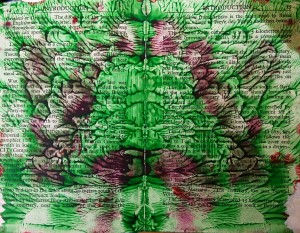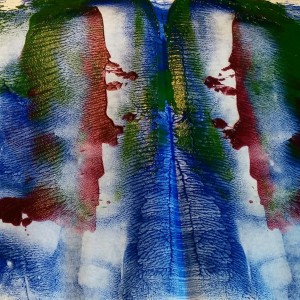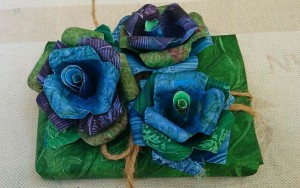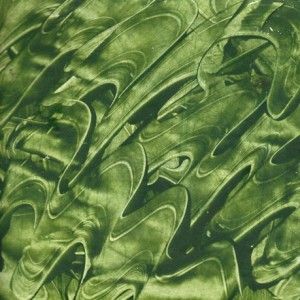For information on how to create paste paper pages, go to:
Tag: Paste Paper
To see instructions on how to create paste paper pages, go to the Workshops page at
One of the most beautiful and accessible techniques for decorating pages is with paste paper. For centuries it has been used for endpapers, bookbinding, wallpaper, and other crafts. In the 17th century it was widely used by unmarried Moravian women as a way of supporting themselves at home; their work made its way all over Europe.
Recipes vary, but this is one I have used for years. The alum is a mordant, which helps the color “grab” the paper. (For my U.K. friends, alum can be bought online.)
- ½ cup white flour (cake flour is best but if you don’t have it, don’t sweat it)
- ½ cup corn starch/corn flour
- 1 tablespoon alum
- 1 cup + 1 cup cold water
- 4 cups boiling water
Basically you are creating a homemade paste. Mix flour, corn starch, and alum thoroughly. Add one cup cold water and whisk. Add four cups boiling water and keep stirring with whisk. Place over high heat on stovetop and keep stirring. As mixture thickens, turn the temperature down and let it simmer. It is important to keep stirring constantly for an even texture. I let it cook for about 15 minutes. The mixture will become somewhat translucent and pudding like.
Take off [read more]
Join me on Saturday, May 2, for a paste paper workshop at the Garnswllt Hall Activity Centre in Ammanford. This is traditional technique similar to marbling that uses pulling, combing, and other devices to create multi-dimensional designs. Once dry, these paste paper pages can be used for a variety of paper crafts, including card making, bookbinding, and collage. From 10:00 to noon we will make unique paste paper pages. After a break for lunch, we will then use our pages in a variety of crafts from 1:00 to 3:00. The fee is £25. Please pre-register by contacting me at KellyBoler79@gmail.com.
Paste paper is a stunning way of creating original designs for use in hand-bound books, handmade boxes, wrapping, and other projects. Basically, it is the art of covering a page in a coat of colored paste made of rice or other starch. (I use a mixture of fine flour and corn starch). Patterns are then made by combing, stamping, or simply “drawing” with fingers.As a decorative paper technique, paste paper dates back to the late 16th century when it was used for making playing cards. Its heyday came in the 1760s when it was popularized by single women living in a German Moravian community as a way to support themselves. Their colorful paste papers were in high demand by bookbinders and for a variety of other uses.
These are some of my paste papers. Keep checking in: I will be adding tutorials on how to make your own soon.

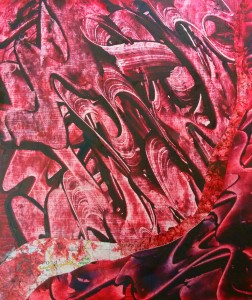
 Follow
Follow
